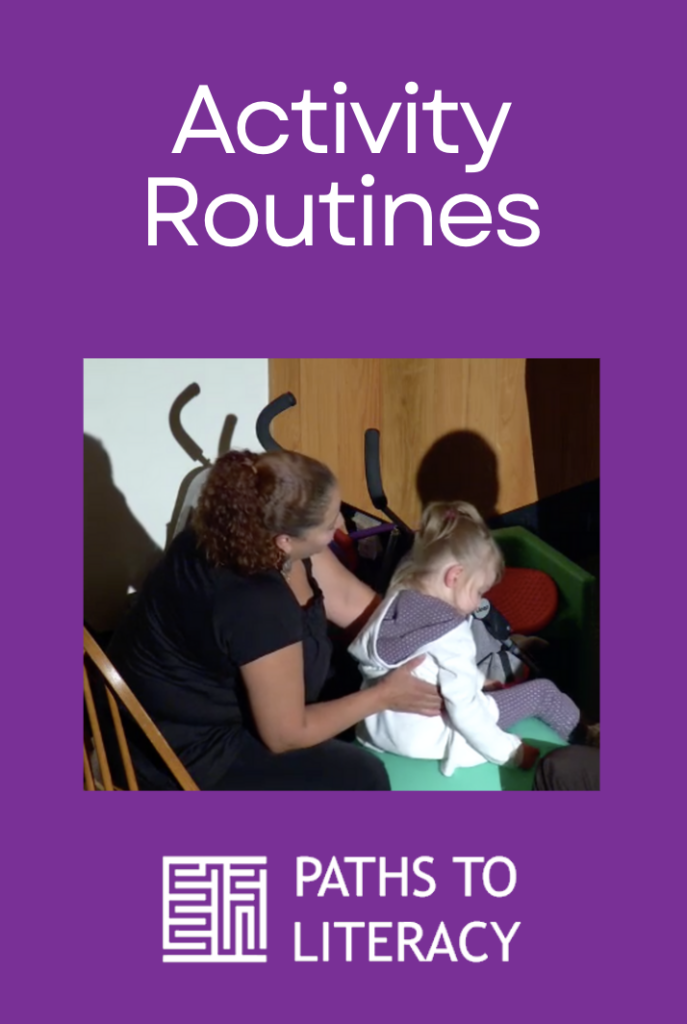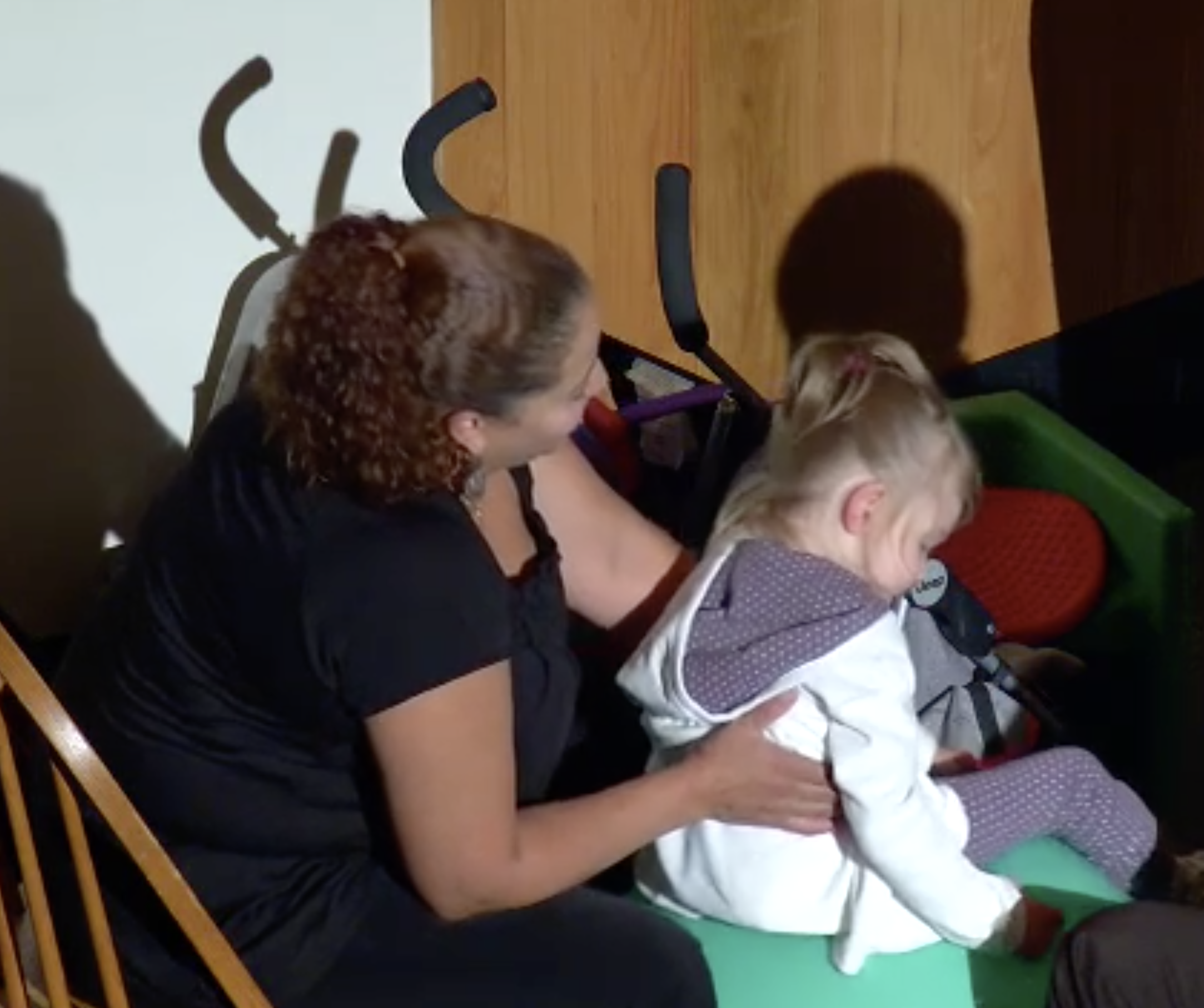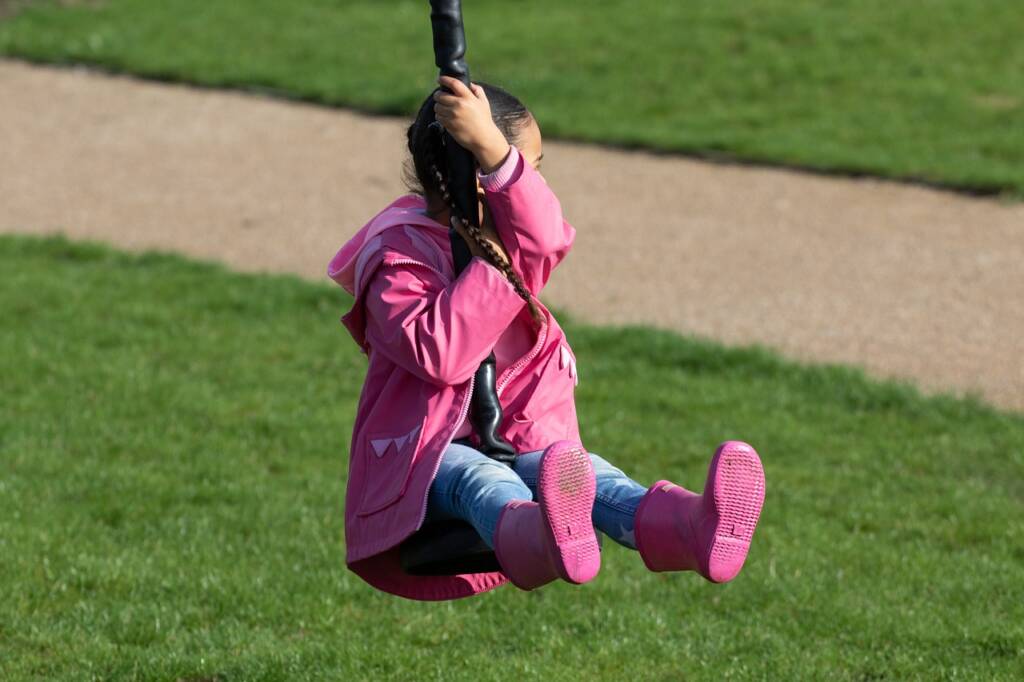Ann Rash and Nancy Toelle, TSBVI Outreach
The most important tool in the TVI’s toolbox when working with multiply impaired visually impaired (MIVI) students is collaborative consultation regarding activity routines. A well-written routine will incorporate aspects relating to all disciplines working with the child: occupational therapist, physical therapist, speech therapist, teacher of the visually impaired, teacher of the auditorially impaired, classroom teacher, parent. Remember the overriding purpose of activity routines is to provide the child with a pleasurable experience that they will want to participate in, will anticipate, and communicate about. Also keep in mind that the very first step to implementing routines is to build a relationship with the classroom teacher and assistants so that they will be open to trying this approach.
Though we feel strongly that activity routines are appropriate for all MIVI students, we recommend that for your first trial you select a student who: attends school regularly, has a teacher who is willing to try new techniques, has demonstrable likes and dislikes and has periods of alertness during the school day.
Steps for incorporating Activity Routines into your practice:
1. Informal assessment of the student:
- Appetite and aversion inventory. Make a list of the student’s likes and dislikes. For example: water play, singing, being held closely, vigorous movement, cuddling, food. This information should come from those most familiar with the child, including parents. The key to this step is to use the activities liked by the child and avoid the dislikes.
- Biobehavioral states. When is the child awake and alert for learning? Ask classroom staff and parents to make note of the child’s most alert times of day. Learning cannot occur if the child is distressed, hungry, or asleep.
- Orienting reflexes. Determine what calms and/or alerts the child to be ready to learn.
2. Writing the routine:
- Develop a trial routine based on the child’s likes as found in the informal assessment information.
- The TVI, classroom teacher, and other related staff available draft a script of the steps for a sample routine, including: positioning, spoken language/sign to be used, location and materials.
- The group agrees on an activity that is highly pleasurable, simple to do, brief, and fits easily into the classroom schedule, and is well within the child’s current range of abilities. Once an initial routine is learned, steps can be incorporated to increase the level of challenge.
- A routine is developed with a note taker being responsible to produce copies for all (frequently the TVI).
- Once a copy is in hand, circulate it to any member of the team who was absent to make sure issues relating to their discipline are addressed properly (positioning, language, etc).
- Set a date to give the routine a try and see how all the steps work and make revisions, as needed.
- Produce a final, revised routine.
3. Implementing the routine:
- The routine will need to be done at least once daily (or as frequently as the child is in school) at the time that it fits in the schedule; can be done exactly as scripted, always in the same location, and with the same materials. Remember, the goal is to build memory and anticipation!
- The final routine should be demonstrated and practiced with whomever will implement it.
- Pick a date to begin that is not before a holiday or when student will be absent for a prolonged period.
- Start the routine and pay attention to the child’s responses to each step: both of you should be enjoying it. Look for: anticipation, participation, pleasurable response, and effort to communicate a desire to continue.
- Keep in mind that you will be establishing a baseline for this child’s ability to learn a new routine and that we simply don’t know how long that will take. Be prepared to stick with it; don’t give up.
Once this routine is firmly established, develop another pleasurable routine, following all the guidelines presented above. This sets the stage for choice making and incorporating these activities into a calendar or schedule of meaningful activities for the child. Eventually, you will be able to sandwich a not-so-pleasurable routine (tooth brushing, face washing) in between highly pleasurable ones.
Sample activity routine:
Rocking with a young child (consult with speech therapist regarding the signs for “more” and “finished”):
- Start by going up to the child with pillow, blanket or other object prompt and say, “Let’s rock!” and help them make a rocking movement with their hands/arms.
- Take the child to the rocker (plain chair or place on the floor where you can rock slightly if no rocker is available).
- Say, “Let’s sit in the rocker (chair/floor),” and seat yourself and the child with the pillow or blanket touching the child.
- Start rocking and sing a rocking song, such as “Rock, Rock, Rocking with Amy”. Sing the line three times before saying, “STOP!”
- Stop and wait for 15 seconds to see if the child indicates in any way that he/she wants to continue.
- Ask “Do you want more?” You may help the child make the sign for more.
- Repeat the rocking, singing, and the STOP several times, as long as the child is enjoying it and is engaged.
- Look for anticipation, participation, communication, and enjoyment on the part of the child.
- When ready to end, say “We’re finished (or all done),” help the child make the finished sign, and get up from the chair immediately.
Suggestions for other simple routines:
- Cuddling – object prompt could be a blanket or stuffed animal
- Water play – object prompt a water toy or bottle of liquid detergent to make bubbles
- Hand lotion – object prompt a pump lotion bottle
- Brushing – object prompt a soft therapy brush (check with OT before implementing)
- Bouncing – object prompt therapy ball
- Music – object prompt switch to turn music on
- Play with vibrating toy – object prompt is toy
Sample IEP Objectives to support the use of activity routines:
These objectives could be implemented by the OT, PT, SP, AI, O&M, TVI, and classroom staff
- Will demonstrate anticipation in the use of 10 familiar objects used in daily routines by appropriate associated actions.
- Will demonstrate anticipation of the next step in specified daily activity routines.
- Will actively participate in specified daily activity routines by movement, communication, use of vision and hearing. (Massage, brushing, switch use, diapering, position change, feeding, and play.)
Learn more about routines
- Routines (Texas Deafblind Project)
- Routines (National Center on Deafblindness)
- Planning a Routine (Texas School for the Blind and Visually Impaired)

This article was originally published by Texas School for the Blind and Visually Impaired (TSBVI) and is reprinted here with permission.




